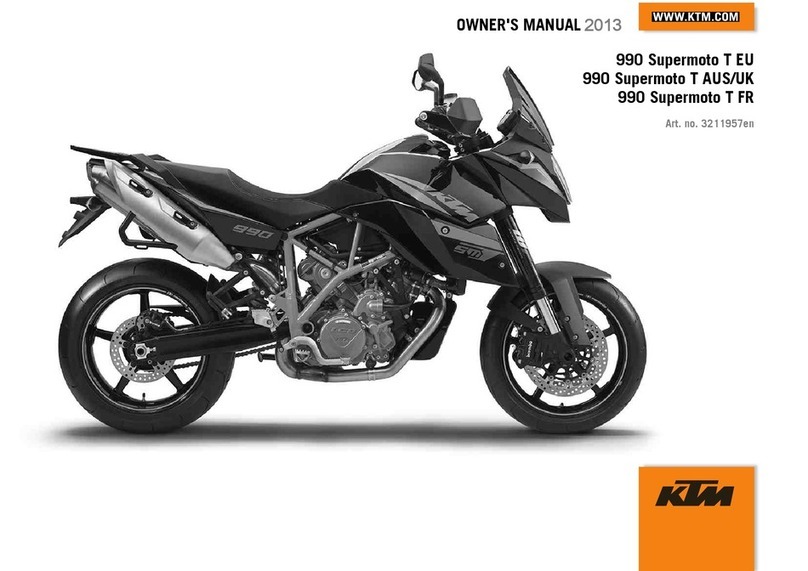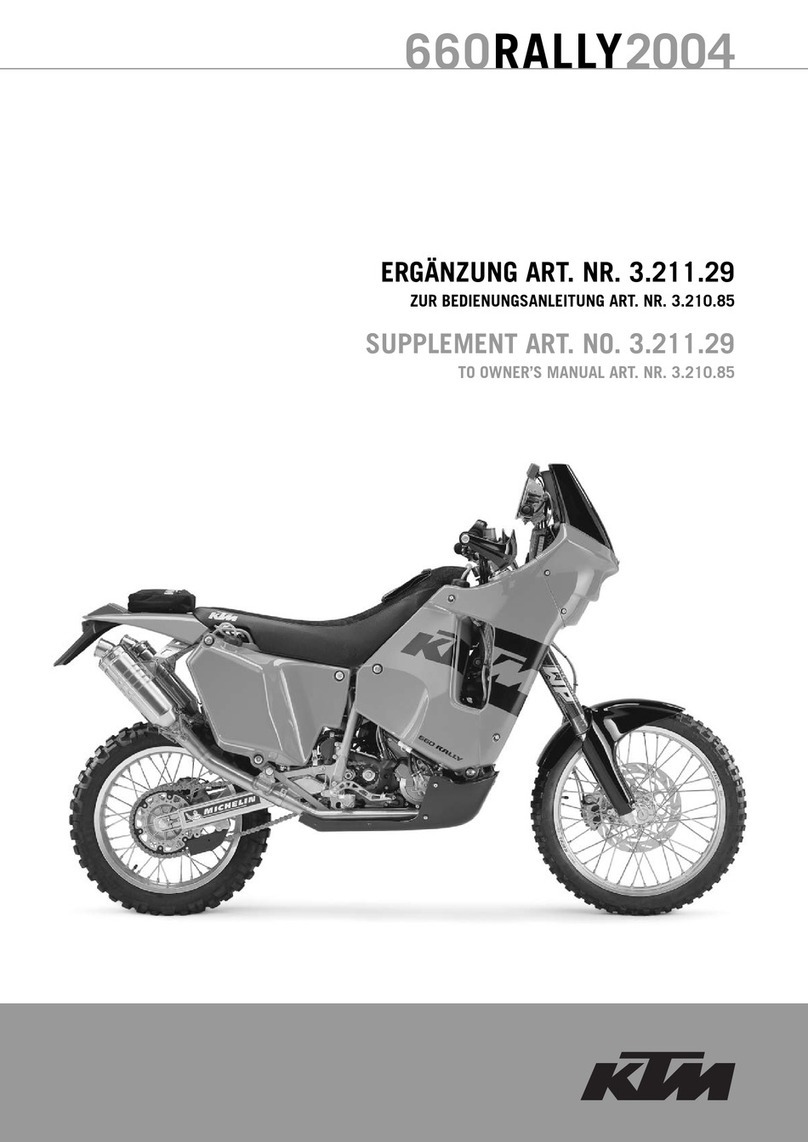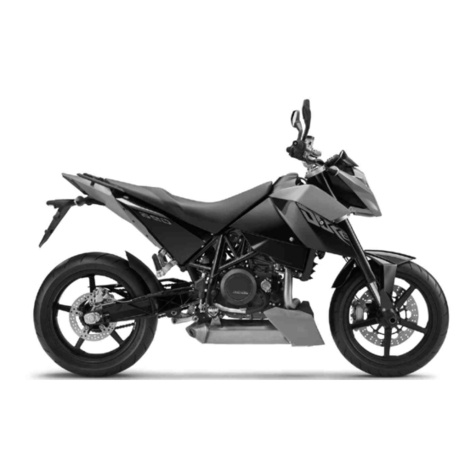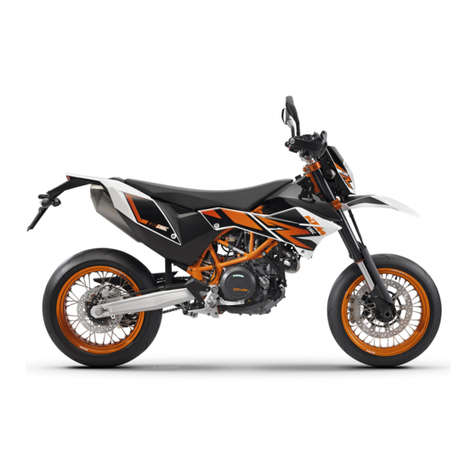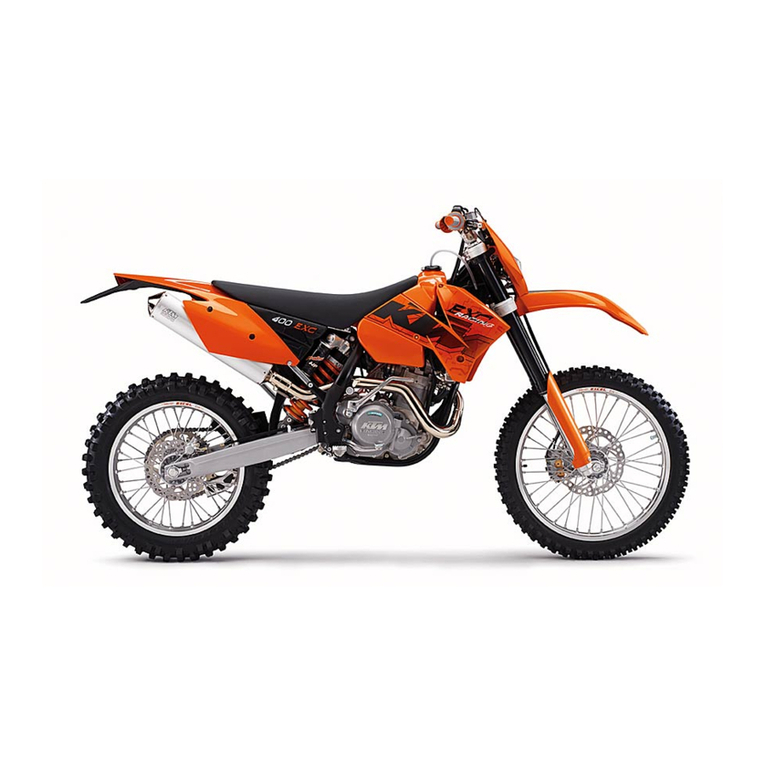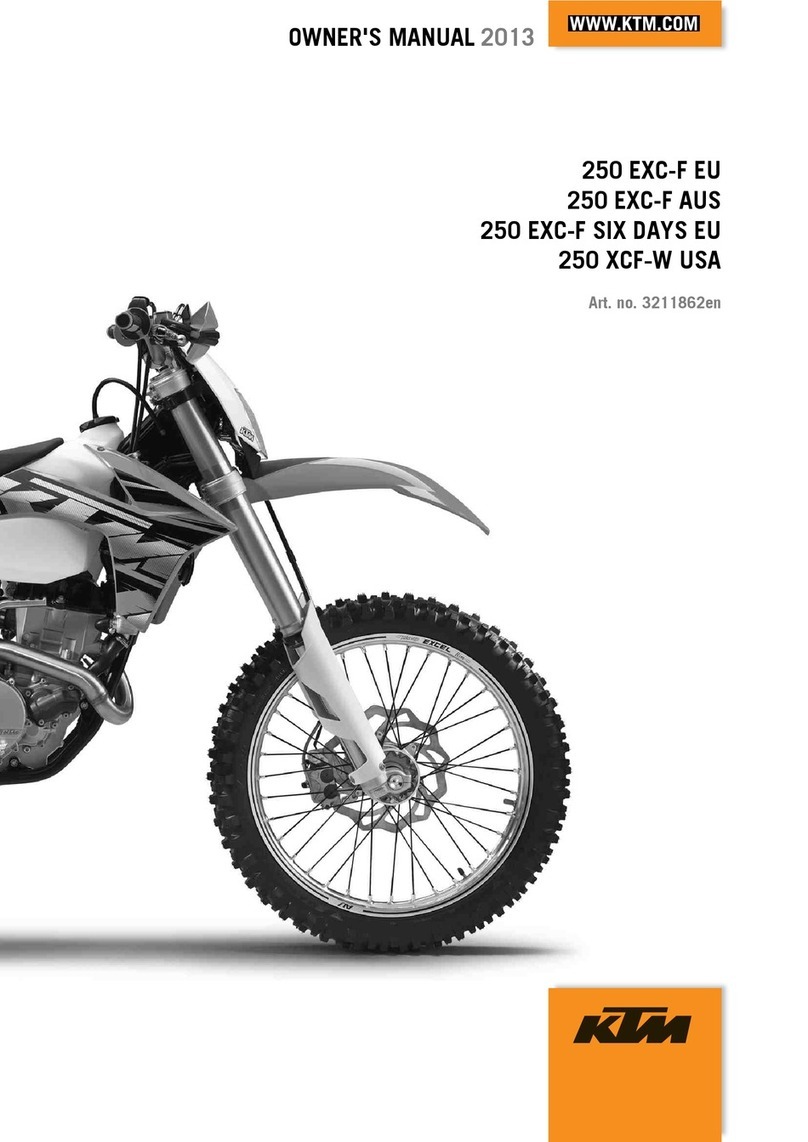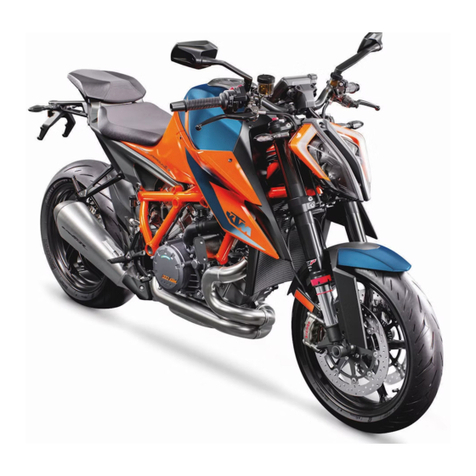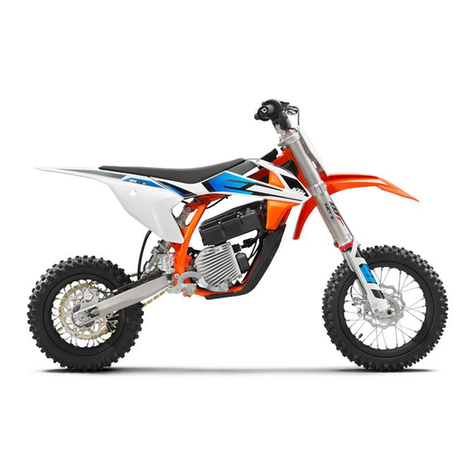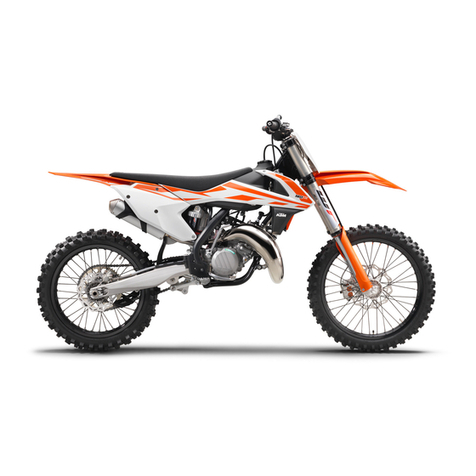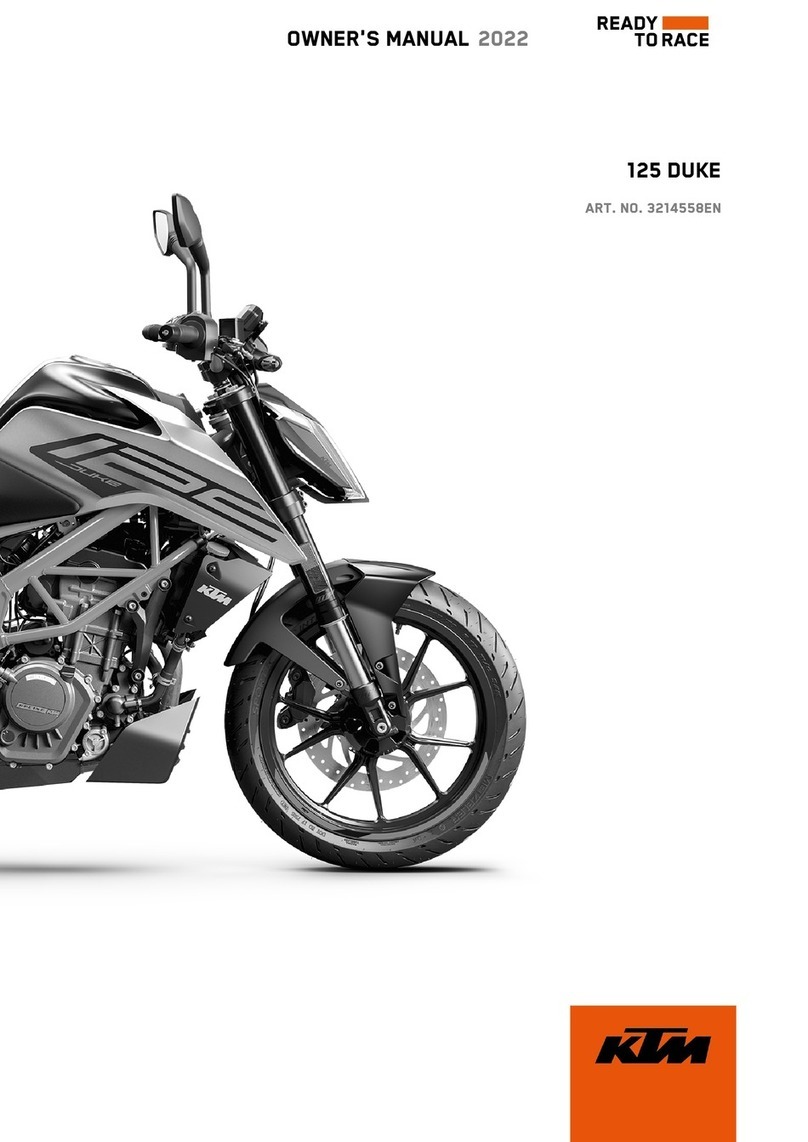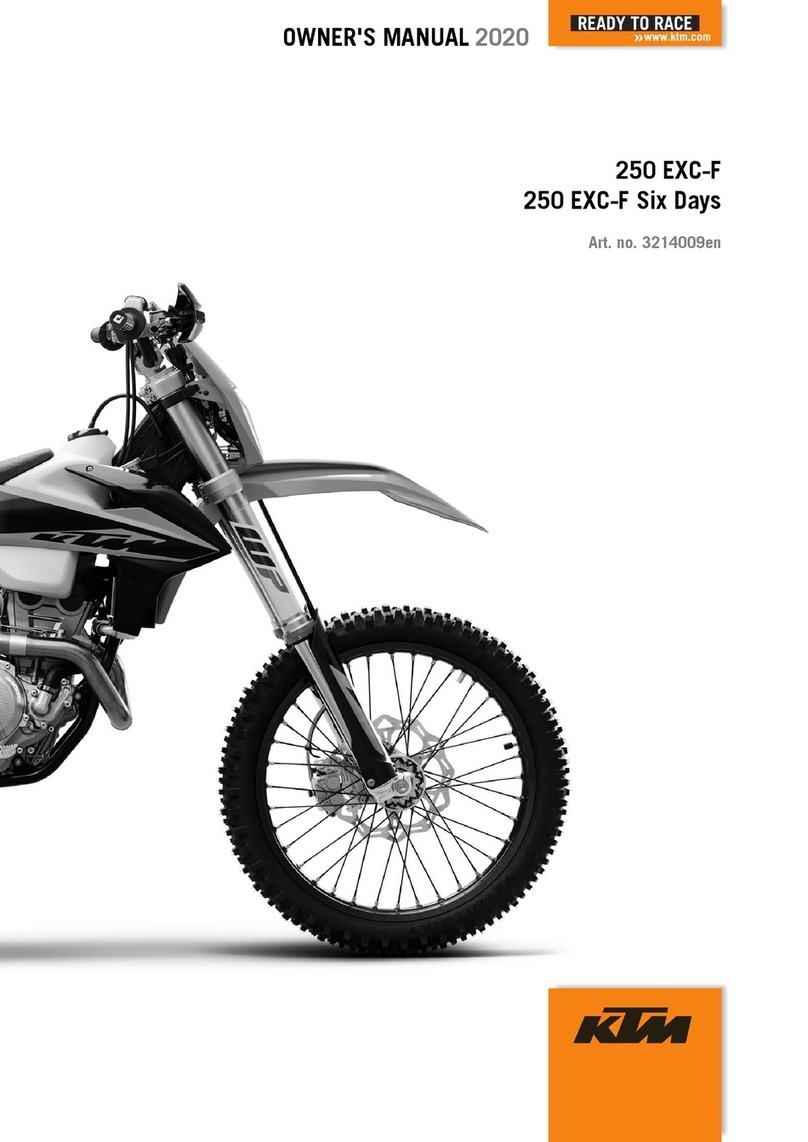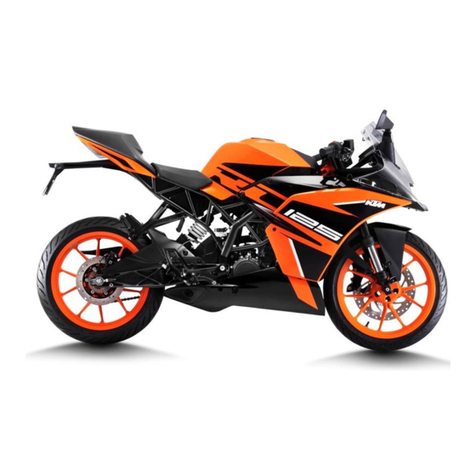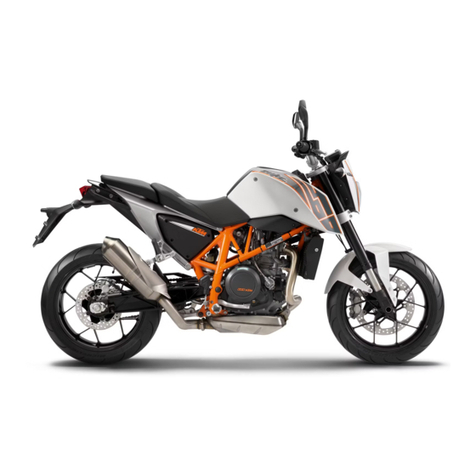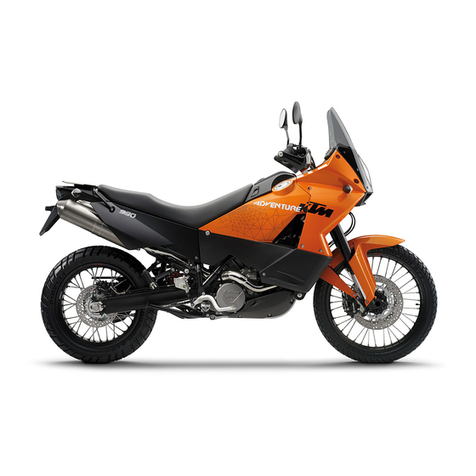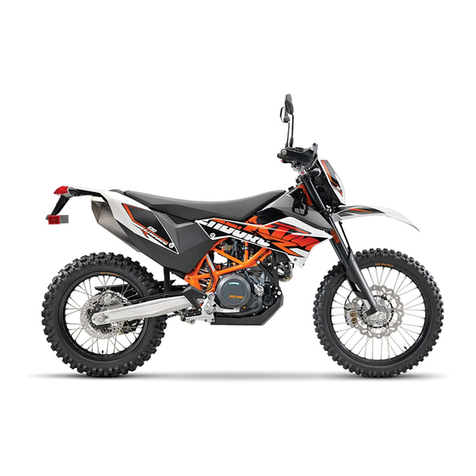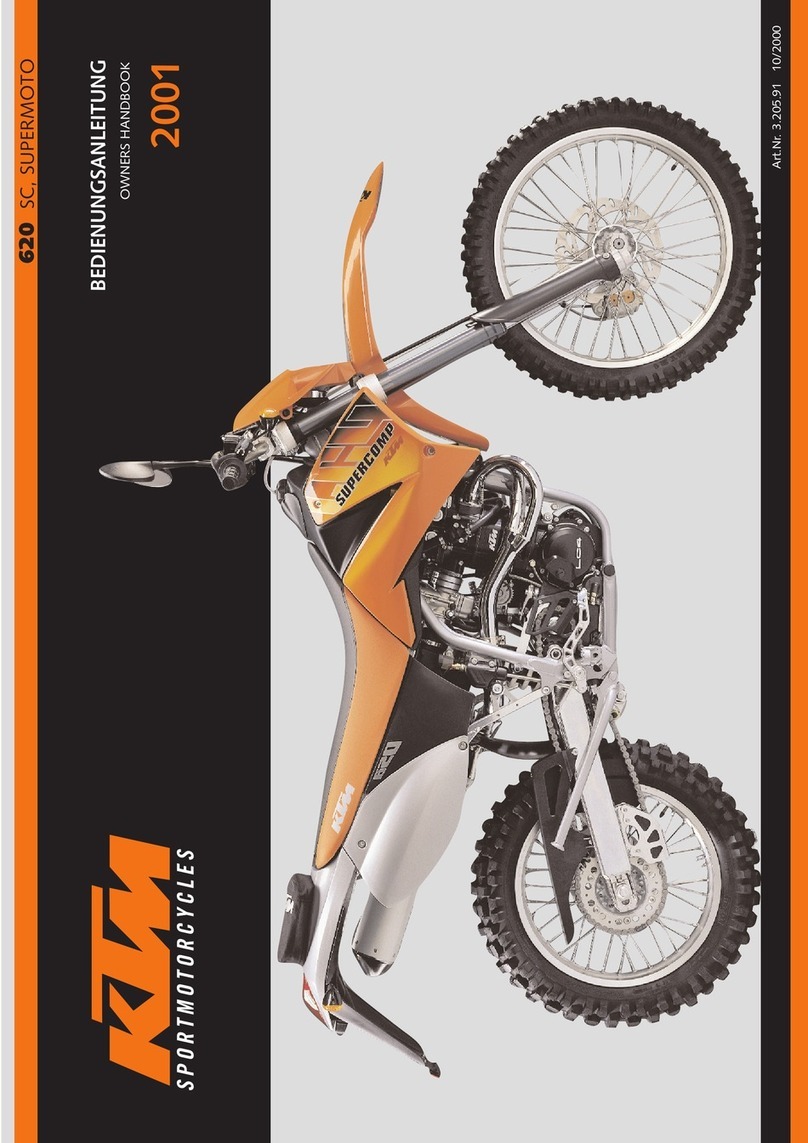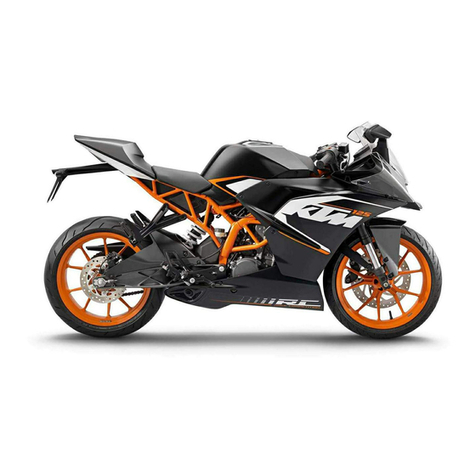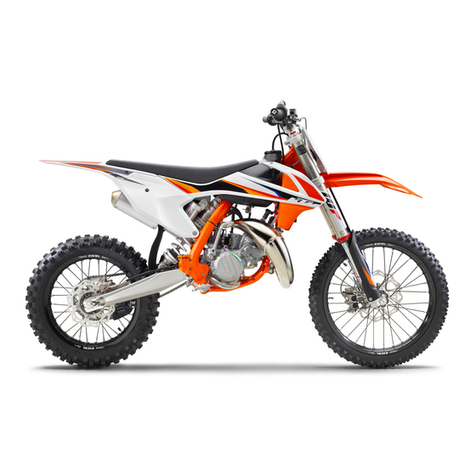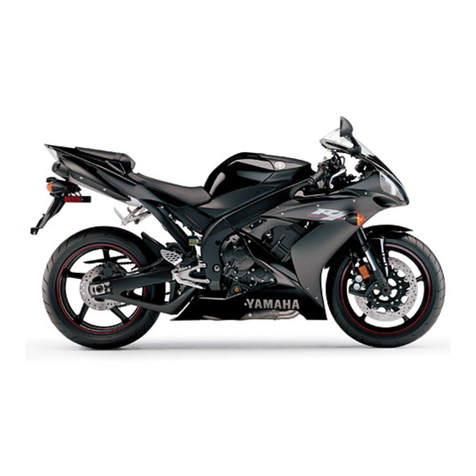
3 WORK 8
3.5 Recharging the battery
Warning
Risk of injury Battery acid and battery gases cause serious chemical burns.
–Keep batteries out of the reach of children.
–Wear suitable protective clothing and goggles.
–Avoid contact with battery acid and battery gases.
–Keep sparks and open flames away from the battery. Only charge in well-ventilated rooms.
–In the event of skin contact, rinse with large amounts of water. If battery acid gets in the eyes, rinse with water for at least
15 minutes and contact a physician.
Warning
Environmental hazard The battery contains elements that are harmful to the environment.
–Do not dispose of batteries with the household waste. Dispose of a defective battery in an environmentally friendly manner.
Give the battery to your authorized KTM dealer or dispose of it at a collection point for used batteries.
Warning
Environmental hazard Hazardous substances cause environmental damage.
–Oil, grease, filters, fuel, cleaners, brake fluid, etc., should be disposed of as stipulated in applicable regulations.
Info
Even when there is no load on the battery, it discharges steadily.
The charging level and the method of charging are very important for the service life of the battery.
Rapid recharging with a high charging current shortens the service life of the battery.
If the charging current, charging voltage, and charging time are exceeded, the battery will be destroyed.
If the battery is depleted from starting the vehicle repeatedly, the battery must be charged immediately.
If the battery is left in a discharged state for an extended period, it will become over-discharged and sulfated, destroying the
battery.
The battery is maintenance-free, i.e., the acid level does not have to be checked.
Preparatory work
–Switch off the ignition by turning the black ignition key to the position OFF .
–Remove the passenger seat. ( p. 7)
–Remove the front rider's seat. ( p. 7)
–Disconnect the negative cable of the battery. ( p. 9)
311910-10
Main work
–Connect the battery charger to the battery. Switch on the battery charger.
Battery charger XCharge-professional EU (00029095050)
Battery charger XCharge-professional US (00029095051)
Battery charger XCharge-professional GB (00029095052)
Battery charger XCharge-professional CH (00029095053)
Info
Follow the charger's instructions exactly.
–Switch off the battery charger after charging and disconnect from the battery.
Guideline
The charging current, charging voltage, and charging time must not be exceeded.
Charge the battery regularly when the
motorcycle is not in use
3 months
Finishing work
–Connect the negative cable of the battery. ( p. 9)
–Mount the front rider's seat. ( p. 7)
–Mount the passenger seat. ( p. 7)
–Set the time and date.

